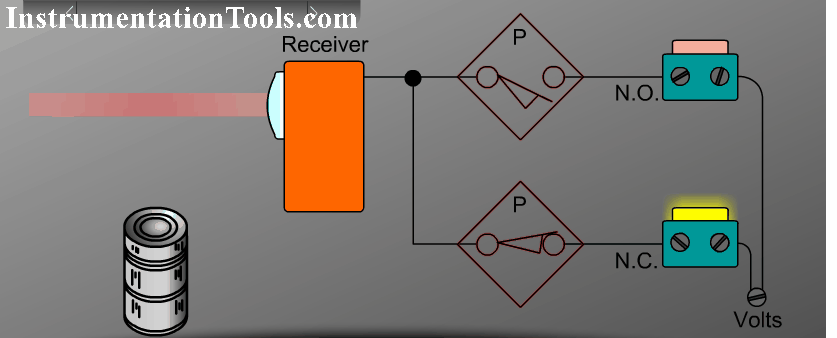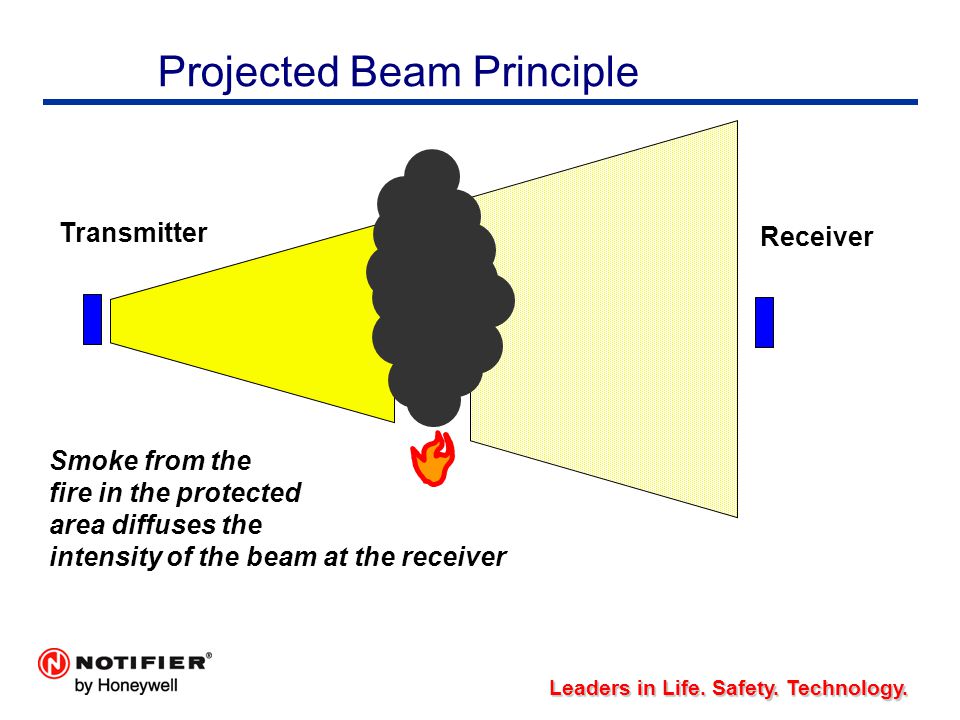A beam detector operates on the principle of obscuration being that an alarm state occurs when the light beam is attenuated reduced or interrupted by the presence of smoke.
Projected beam smoke detectors work on the principle of.
How does a beam smoke detector work.
This effectively transforms the building into the sensing chamber with the optical beam detecting smoke along the entire beam path.
A combination of smoke density and the linear distance of the smoke field create this obscuration across the projected light beam.
It is important that designers understand and give full consid eration to these requirements when selecting and applying beam smoke detectors to fire alarm systems.
Reflected beam smoke detection.
Spot type smoke detectors beam detectors are governed by ul and nfpa 72 2013 section a 17 7 3 7.
Optical beam smoke detectors work on a similar principle except that the infrared light beam is projected across the open area of a building.
Beam type smoke detectors require visible smoke and might not be as sensitive as ion detectors in some applications.
A beam smoke detector works on the principle of obscuration.
Beam type smoke detectors are sensitive to the cumulative obscuration presented by a smoke field.
With only one device to install and align these single ended optical.
Optical beam detectors work on the principle of projecting a beam of light across a room which is attenuated when smoke is present raise an alarm there are two forms of beam detector.
Unlike traditional detection systems reflected beam smoke detectors were designed for spacious rooms open areas and high ceilings.
Beam detectors work on the principle of light obscuration much like standalone optical smoke detectors.
Optical beam smoke detectors work on the principle of light obscuration where the presence of smoke blocks some of the light from the beam typically through either absorbance or light scattering once a certain percentage of the transmitted light has been blocked by the smoke a fire is signalled.
Emitter and receiver separate single path requiring separate wiring both to the emitter and receiver chennai.
A beam detector has two main parts.
An optical beam smoke detector is a device that uses a projected beam of light to detect smoke across large areas typically as an indicator of fire.
In simple terms the receiver monitors the beam of light for any anomalies the presence of smoke particles scatters the beam of light meaning the receiver s photosensitive sensor picks up less light on the beam s return.
Beam detectors are designed to operate over long distances typically up to 110 metres and require a straight uninterrupted direct line of sight.
The beam detector sends out an invisible infra red ir beam of light that the receiver measures.
Detector like photodiode etc.
Their innovative features make them popular choices for spaces like warehouses atriums arenas and churches.
Beam detectors working principle.







